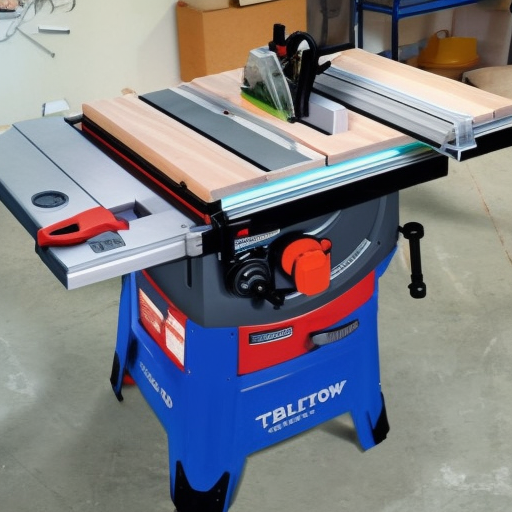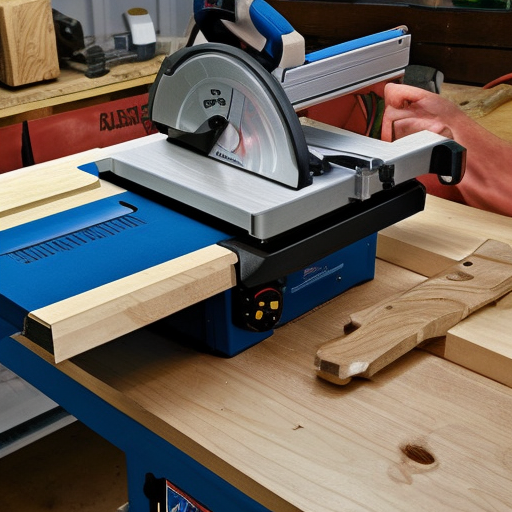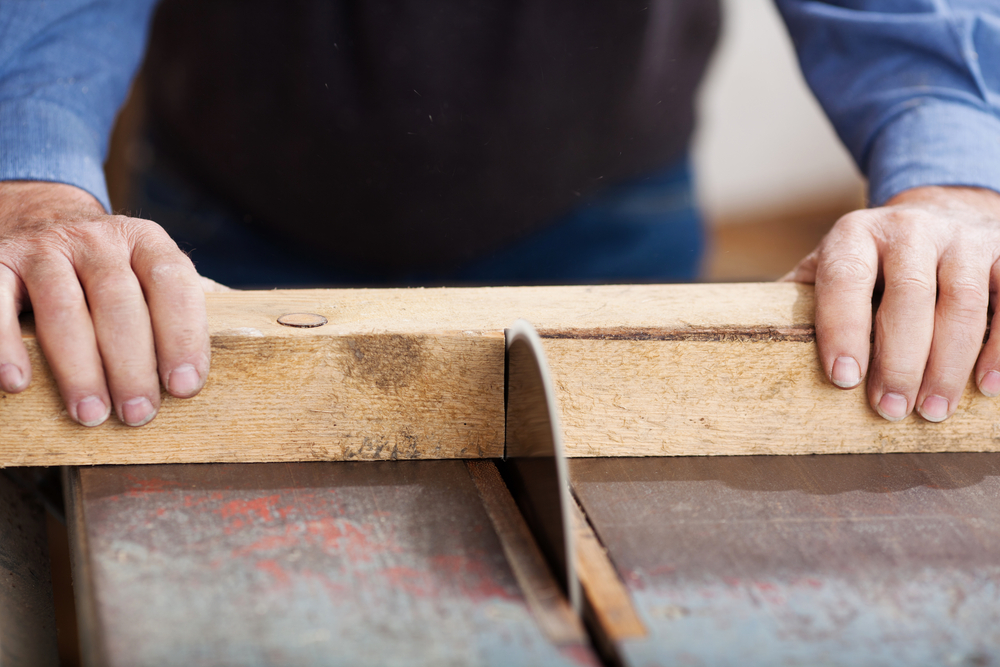Last Updated on February 7, 2023
Are you ready to take your DIY projects up a notch? If so, understanding the basics of table saw rip capacity is essential. The term “rip capacity” may sound intimidating, but it’s actually quite simple. In this blog post, we’ll explore what rip capacity means in terms of table saws and how it can help you make more accurate cuts for your home improvement projects. We’ll also look at other factors that should be considered when choosing a new table saw and tips on making precise cuts with one. So if you’re looking to get the most out of your next project, read on and discover all there is to know about a table saw rip capacity.
Table of Contents:
- What Is a Table Saw Rip Capacity?
- How Does Rip Capacity Affect Your Projects?
- FAQs in Relation to What is a Table Saw Rip Capacity
- Conclusion
What Is a Table Saw Rip Capacity?
Table saw rip capacity is an important factor to consider when choosing a table saw. It’s the maximum width of material that can be cut with a single pass on the saw and is measured in inches. Rip capacity typically ranges from 8 to 24 inches, depending on the type of table saw you have.
For example, if you need to make a 10-inch wide cut in plywood, then your rip capacity should be at least 11 inches so that it can accommodate the extra 1 inch for clearance between the blade and fence. If your rip capacity isn’t large enough for this project, you’ll need to make multiple passes or use another tool altogether.
Rip capacity also affects how accurately cuts are made because it determines how much support there is for larger pieces of wood as they move through the blade. The wider your rip capacity is, the more stability and control you will have over longer boards as they go through your table saw’s cutting surface. This helps ensure accuracy while reducing waste due to inaccurate cuts or kickbacks caused by uneven pressure on either side of the board during cutting operations.
The size and weight of your workpiece also play a role in determining what kind of table saw you should buy based on its rip capacity capabilities. Heavier materials require more power from a motor which means that bigger table saws with higher horsepower ratings may be necessary if working with thicker woods like oak or walnut – both common choices for furniture-making projects where precision matters most. Additionally, some models come equipped with additional features such as adjustable fences or mitre gauges, which can help increase accuracy even further when making angled cuts across different types of materials like hardwoods versus softwoods.
Finally, it’s important to keep safety in mind when selecting any power tool, including those used for woodworking projects such as table saws – always read up on manufacturer instructions before operating one. A good rule-of-thumb here would be: choose a model whose specifications match or exceed whatever task(s) you plan on using it for; this way, not only will performance remain optimal, but risks associated with misuse are minimised too.
How Does Rip Capacity Affect Your Projects?

Rip capacity is an important factor to consider when selecting a table saw. It refers to the maximum width of material that can be cut on the saw in one pass. Having a larger rip capacity allows you to make wider cuts, which can be beneficial for larger projects such as cutting plywood or other sheet goods. It also allows you to make more precise cuts since you don’t have to worry about making multiple passes on the saw.
For example, if your project requires cutting a 4-foot wide piece of plywood, then having a 3-foot rip capacity would mean that it has to be cut into two pieces before it could fit onto the table saw and then reassembled afterwards. This adds time and complexity to any project and makes accuracy much harder than with just one pass through the blade.
Having a large enough rip capacity also means that you won’t need additional tools like jigsaws or circular saws for certain tasks – saving time and money in the long run. You may even find yourself able to tackle projects that were previously out of reach due to limited space or resources.
When shopping around for table saws, always check what their rip capacities are so that you know exactly what size materials they can handle without needing extra equipment or modifications. The most common sizes range from 10 inches up to 36 inches, but there are some models available with even higher capacities if needed. Make sure that whatever model you choose fits within your budget while still giving you enough room for future projects too.
Finally, remember that safety should always come first when using power tools like table saws – no matter how big their rip capacities are. Always wear appropriate protective gear such as goggles and gloves while operating them, and read all instructions carefully before use to avoid risking injury or damage either to yourself or your workpiece(s).
FAQs in Relation to What is a Table Saw Rip Capacity
What is a good rip capacity for a table saw?

When selecting a table saw, it is important to consider the rip capacity. This refers to the maximum width of material that can be cut with one pass. Generally speaking, a good rip capacity for a table saw should be at least 24 inches wide. If you plan on cutting wider materials regularly, then look for models with larger capacities, such as 30 or even 50 inches. Keep in mind that some models may require an extension kit to reach these sizes. When shopping around, make sure to check the specifications carefully, so you get the right size for your needs.
What does 27-inch rip capacity mean?
27-inch rip capacity is a measure of the maximum width of material that can be cut in one pass when using a table saw. It is measured from the blade to the edge of the fence and indicates how wide a piece of wood or other material can be cut with each pass. The higher the number, the wider materials can be cut at once. This makes it easier to make larger cuts quickly and accurately, making it an important factor for anyone who works with large pieces of wood or other materials regularly.
How do I increase the rip capacity of my table saw?
To increase the rip capacity of your table saw, you should first check to see if it has an adjustable fence. If so, adjust the fence to fit your desired width. If not, consider purchasing a longer aftermarket fence that can be attached to your existing table saw. Additionally, you may need to purchase a wider throat plate and/or larger mitre gauge slots in order for the new fence to fit properly. Finally, ensure that all components are securely fastened before use and follow any safety guidelines provided by the manufacturer.
What size table saw to rip plywood?
Choosing the right table saw for ripping plywood can be a tricky decision. The size of the saw you need depends on the thickness and width of your plywood sheets. Generally, if you are working with thin plywood (less than 1/2 inch thick), then a 10-inch table saw should suffice. If you’re dealing with thicker material, such as 3/4 inch or more, then consider upgrading to a 12-inch model. Make sure that whatever model you choose has enough power to handle the job at hand – look for one with at least 15 amps of motor power and make sure it is equipped with an adjustable fence system for precise cuts.
Conclusion
In conclusion, a table saw rip capacity is an important factor to consider when choosing the right table saw for your projects. It affects how wide of a cut you can make and should be taken into account when deciding which model best suits your needs. With the right knowledge and tips, you can ensure that you get accurate cuts with your table saw every time. So take some time to research what kind of rip capacity will work best for you before making a purchase – it’ll pay off in the long run.
Paul is the type of person who never met a problem he couldn’t fix. He can always be found tinkering with something in his house, even if it isn’t broken! His tips and tricks are often shared on our site. He’s the one you call when something breaks because he has been known to improvise fixes for everything from leaky faucets to malfunctioning dryers.

